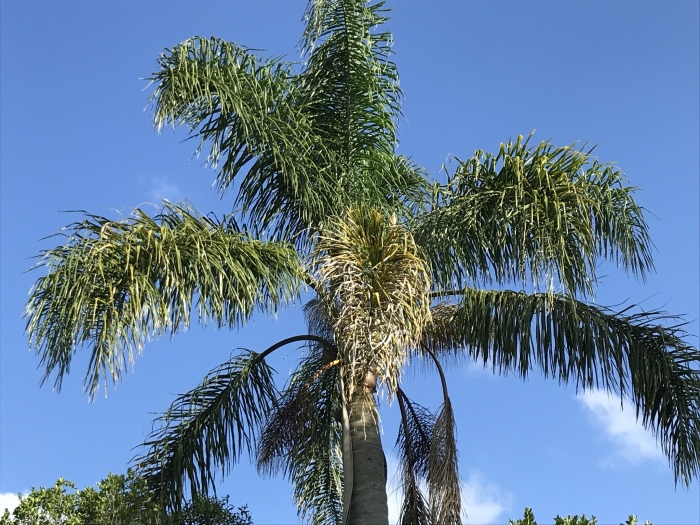Queen Palm
(Syagrus romanzoffiana)
Queen Palm (Syagrus romanzoffiana)
/
/

Gabriel Laufer
Public Domain
Image By:
Gabriel Laufer
Recorded By:
Copyright:
Public Domain
Copyright Notice:
Photo by: Gabriel Laufer | License Type: Public Domain | License URL: http://creativecommons.org/publicdomain/zero/1.0/ | Rights Holder: Gabriel Laufer | Publisher: iNaturalist | Date Created: 2020-02-09T20:18:12Z |











































































Estimated Native Range
Summary
Syagrus romanzoffiana, commonly known as Queen Palm, is an evergreen palm native to open woodlands and grasslands of Eastern South America, particularly Brazil, Argentina, Paraguay, and Uruguay. It is a fast-growing palm that can reach up to 50 feet (15 meters) in height with a spread of 15-25 feet (4.5-7.6 meters). The Queen Palm has a smooth, gray trunk and a graceful crown of arching fronds. It produces showy clusters of creamy white flowers during spring and summer, followed by orange fruits.
Queen Palm is valued for its tropical appearance and is widely used in urban landscaping, especially in avenues and public gardens. It is also planted as a specimen tree in large gardens and parks. This palm is relatively low maintenance, requiring minimal pruning of dead fronds to maintain its aesthetic appeal. It thrives in full sun and well-drained soils, and while it is hardy to -5 °C (zone 9a), it prefers warmer climates. The fruit can attract pests, and it is important to manage fallen fruit to avoid insect problems. In regions where it is not native, such as Florida, Syagrus romanzoffiana can become invasive, so gardeners should check local regulations before planting.CC BY-SA 4.0
Queen Palm is valued for its tropical appearance and is widely used in urban landscaping, especially in avenues and public gardens. It is also planted as a specimen tree in large gardens and parks. This palm is relatively low maintenance, requiring minimal pruning of dead fronds to maintain its aesthetic appeal. It thrives in full sun and well-drained soils, and while it is hardy to -5 °C (zone 9a), it prefers warmer climates. The fruit can attract pests, and it is important to manage fallen fruit to avoid insect problems. In regions where it is not native, such as Florida, Syagrus romanzoffiana can become invasive, so gardeners should check local regulations before planting.CC BY-SA 4.0
Plant Description
- Plant Type: Tree
- Height: 30-40 feet
- Width: 20-30 feet
- Growth Rate: Moderate
- Flower Color: White
- Flowering Season: Spring, Summer
- Leaf Retention: Evergreen
Growth Requirements
- Sun: Full Sun
- Water: Medium
- Drainage: Fast, Medium
Common Uses
Bird Garden, Low Maintenance, Showy Flowers
Natural Habitat
Open woodlands and grasslands of Eastern South America
Other Names
Common Names: Cocos Palm, Giriba Palm, Romanzoffianische Kokospalme, Drottningpalm
Scientific Names: , Syagrus romanzoffiana, Arecastrum romanzoffianum, Cocos plumosa, Cocos australis, Arecastrum romanzoffianum var. australe, Cocos romanzoffiana, Cocos martiana, Arecastrum romanzoffianum var. genuinum, Arecastrum romanzoffianum var. micropindo
GBIF Accepted Name: Syagrus romanzoffiana (Cham.) Glassman